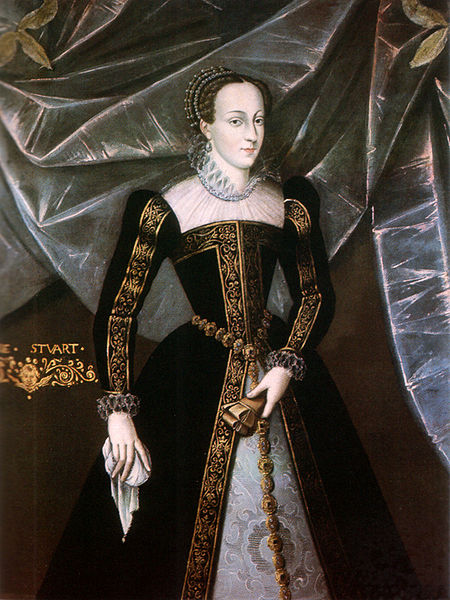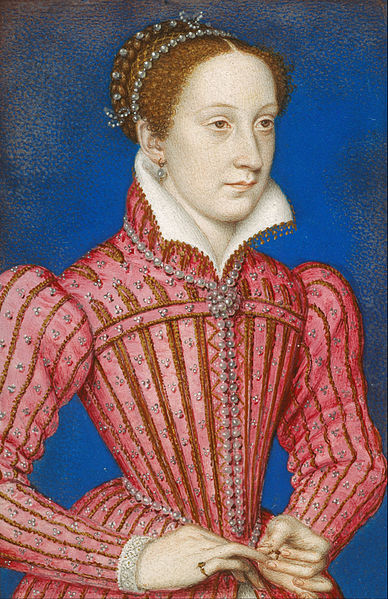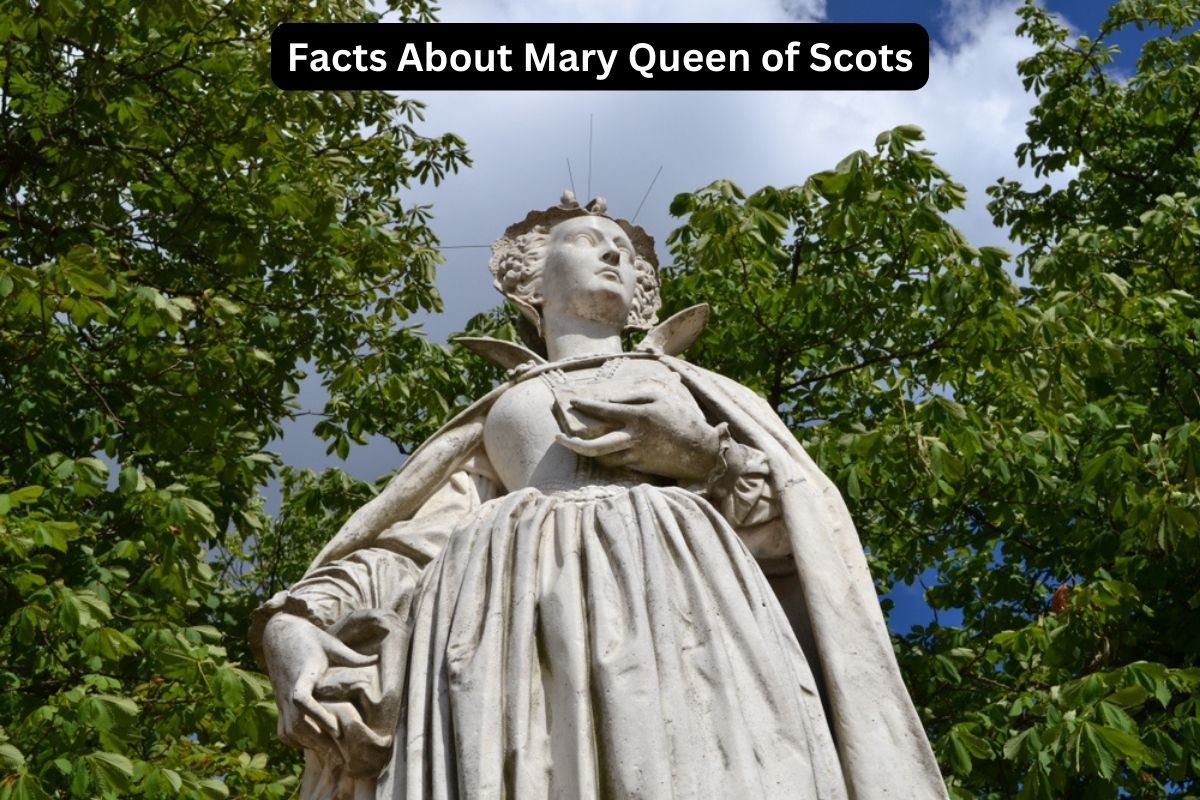Mary Stuart, born on December 8, 1542, in Linlithgow Palace, Scotland, was the daughter of James V of Scotland and Mary of Guise.
She became Queen consort of France through her marriage to Francis II at the age of 15 but was widowed when Francis died in 1560. Returning to Scotland, she faced political turmoil, including a turbulent marriage to Lord Darnley and imprisonment in Loch Leven Castle.
Forced to abdicate in 1567, she escaped but was imprisoned by her cousin, Queen Elizabeth I of England. Mary’s involvement in Catholic plots against Elizabeth led to her trial and execution in 1587.
Her legacy includes her son, James VI of Scotland (James I of England), uniting the crowns of England and Scotland in 1603, and her enduring status as a captivating historical figure.
Mary Queen of Scots Facts
1. Born on December 8, 1542, in Linlithgow Palace, Scotland
Mary Stuart was born on December 8, 1542, in Linlithgow Palace, Scotland. She was the daughter of James V of Scotland and Mary of Guise.
Also Read: Why was Mary Queen of Scots Called Bloody Mary?
Her birth was significant because it made her the heir to both the Scottish and English thrones. This was due to her being the grandniece of King Henry VIII of England through her grandmother, Margaret Tudor.

2. Married Francis II of France at age 15 and became Queen consort of France
At a young age of six, Mary was betrothed to Francis II, the Dauphin (heir to the French throne) and the son of King Henry II of France and Catherine de’ Medici.
Also Read: Timeline of Mary Queen of Scots
This strategic marriage alliance between the Scottish and French crowns was meant to strengthen the Catholic influence in Europe, as both Mary and Francis were devout Catholics.
In 1558, at the age of 15, Mary married Francis II, becoming the Queen consort of France. This marriage united the thrones of Scotland and France.
3. Returned to Scotland in 1560 after the death of Francis II
Mary’s life took a dramatic turn when her husband, Francis II, died prematurely in 1560, leaving her a widow at the age of 18. With his death, Mary lost her position as Queen of France.
She chose to return to Scotland, where she assumed her role as Queen of Scots. This marked a critical point in her life as she navigated the complex politics of Scotland, which were influenced by religious strife between Catholics and Protestants.
Her return to Scotland set the stage for a series of political struggles and conflicts, especially her contentious relationship with her cousin, Queen Elizabeth I of England, who viewed Mary as a threat to her own claim to the English throne due to their shared Tudor heritage.
4. Rivalry and conflicts with Queen Elizabeth I of England
Mary’s claim to the English throne made her a rival to Queen Elizabeth I of England. This rivalry was rooted in their shared Tudor ancestry, both being descendants of Henry VII.
The complex web of European politics, religious differences (Mary was Catholic, while Elizabeth was Protestant), and competing claims to the English throne created a tense and often hostile relationship between the two queens.
Elizabeth’s reluctance to name a clear successor added to the uncertainty and intrigue surrounding Mary’s life. Many Catholic factions and European powers viewed Mary as the rightful Queen of England, which fueled numerous plots against Elizabeth’s rule.
5. Married Lord Darnley in 1565, resulting in a tumultuous marriage
In 1565, Mary married Henry Stuart, Lord Darnley, who was also her cousin. The marriage was initially seen as an attempt to unite the warring factions in Scotland, as Darnley had a claim to the Scottish throne.
However, their marriage quickly turned turbulent. Lord Darnley’s behavior became erratic, and he sought to assert more power and authority in Scotland, causing tensions and political instability.
Their tumultuous relationship included personal conflicts, power struggles, and allegations of infidelity, which ultimately contributed to Mary’s political downfall

6. Gave birth to her only child, James Stuart, in 1566
Despite the challenges in her marriage, Mary gave birth to her only child, James Stuart, in 1566. James would later become James VI of Scotland and, after the death of Elizabeth I, James I of England, uniting the crowns of England and Scotland.
The birth of James was significant in the context of the time, as it secured a Stuart heir to the Scottish throne and created a potential future claimant to the English throne, further complicating the political dynamics in Europe.
7. Imprisoned in Loch Leven Castle in 1567 and forced to abdicate
Mary’s marriage to Lord Darnley ended in disaster, with political tensions and personal conflicts intensifying. In 1567, a series of events, including the murder of her secretary, David Rizzio, and the mysterious explosion at Kirk o’ Field, led to a loss of support among the Scottish nobility.
Facing political opposition and fearing for her safety, Mary was imprisoned in Loch Leven Castle. Under duress, she was forced to abdicate the Scottish throne in favor of her infant son, James VI, who became king with regents ruling on his behalf.
8. Escaped but was later imprisoned in England by Elizabeth I
In a daring move, Mary managed to escape from Loch Leven Castle in 1568 with the help of supporters. She rallied loyalists and attempted to regain power in Scotland, but her efforts were ultimately unsuccessful.
Faced with a lack of domestic support and growing opposition, Mary sought refuge in England, believing that her cousin, Queen Elizabeth I, would provide her with protection and assistance. However, her arrival in England would lead to nearly two decades of captivity and political intrigue.
9. Implicated in the Babington Plot, leading to her trial and execution in 1587
Rather than receiving the support she had hoped for in England, Mary found herself effectively imprisoned by Elizabeth I. Her presence in England posed a significant political threat to Elizabeth’s rule, as many Catholic factions and European powers continued to view Mary as the legitimate Queen of England.
Mary’s involvement in various Catholic plots against Elizabeth, including the Babington Plot, led to her trial for treason in 1586. She was found guilty and sentenced to death.
On February 8, 1587, Mary, Queen of Scots, was executed by beheading at Fotheringhay Castle in England. Her execution marked the tragic and dramatic end to a tumultuous life, and it had significant repercussions in both England and Scotland.
10. Continues to be a historically significant and fascinating figure
Mary, Queen of Scots, continues to be a captivating historical figure whose life story has inspired countless works of literature, art, and drama. Her tumultuous reign, personal struggles, and tragic fate have left an indelible mark on history.
Her legacy also includes the union of the Scottish and English crowns through her son, James VI of Scotland, who became James I of England. This event, known as the Union of the Crowns in 1603, played a pivotal role in shaping the future of the British Isles.
Mary’s story is a testament to the complex and often perilous world of Renaissance politics, religious strife, and royal rivalries in the 16th century.
